Social and economic development. Рубрика в журнале - Arctic and North
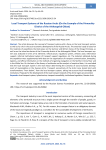
Статья научная
The article discusses the concept of transport system with a focus on the local transport system, as well as its role in the socio-economic development of the Russian Arctic. The empirical study is based on the materials of expeditions that took place on the Summer and Winter shores of the Onega Peninsula, as well as on the island territories of the Primorskiy district of the Arkhangelsk Oblast. The local transport system was analyzed in terms of its elements: infrastructure, regulatory system, vehicles used, information support, informal institutional system of transport support regulation, etc. The materials obtained during the expedition were supplemented with data on the organization of transport communication, timetables, logistics, and official information on the methods of organizing navigation on the Northern Dvina River and in the White Sea. On the basis of the theory of multiscale and the analysis of empirical data, it is concluded that the local transport system is the main factor determining the scenarios of socio-economic development of municipalities in the Russian Arctic. Transport connectivity of the Arctic zone should start with transformations “from below”, from the local transport system, taking into account local knowledge and institutions. Proposals for the development of the local transport network of the Arctic region are presented.
Бесплатно
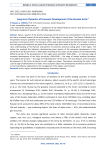
Long-term dynamics of economic development of the Russian Arctic
Статья научная
About a quarter of the world's natural gas and oil reserves are concentrated in the Arctic, which has led to increased interest of the world powers in this region in recent years. The Russian Federation has the greatest resource potential in this macro-region. This article examines the transformation of economic processes in the Russian Arctic. The relevance of the study is determined by the fact that in order to achieve the main goals and implement the tasks of the modern state Arctic policy of Russia, it is necessary to have a clear understanding of the features and patterns of economic processes taking place in this region. The author has analyzed the indicators characterizing some aspects of the economic development of the territories of the Russian Arctic in 1950–2018. According to the results of the analysis, three fundamentally different periods of the development of this region were identified: 1950–1990 — an intensive stage of economic development of the Arctic territories; 1990–1999 — the stage of market relations formation; from 2000 to the present — the stage of “redevelopment” of the Arctic. The main features of the economic development of the Arctic territories at each stage are shown. Conclusions concerning the tasks of the current stage of development are made. The assumption about the contemporary tendencies and the need to find new effective approaches to the management of the region is put forward.
Бесплатно
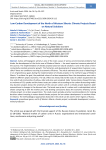
Low-Carbon Development of the North of Western Siberia: Climate Projects Based on Natural Solutions
Статья научная
Active anthropogenic activity is one of the main causes of serious environmental problems that hinder the development of the Arctic zone of Western Siberia — the most important resource potential of the country. The implementation of climate projects based on natural solutions is one of the areas of environmentally oriented economic growth. The formation and development of sequestration business is possible if there are conditions ensuring its economic efficiency. The article estimates the costs of absorbing of 1 ton of greenhouse gases during the implementation of climate projects in the northern taiga of Western Siberia. To achieve the goal, the predicted values of carbon sequestered from the atmosphere were calculated for different project scenarios. The CO2 effect was measured and the costs of carbon sequestration by tree and shrub communities of willow, alder and pine were analyzed. Alder monocultures showed the largest volumes of CO2 uptake and the lowest costs per carbon unit according to the carbon discounting model. CO2 duration analysis shows the sensitivity of the cost per carbon unit of a climate project based on alder monocultures to changes in the discount rate. The break-even price of a carbon unit is substantiated, which allows comparing it with the market price and drawing conclusions about the economic efficiency of the climate project on carbon sequestration. The study results provide practical recommendations for making decisions about investing in nature-based climate projects for low-carbon development in northern Western Siberia. The methodological approaches disclosed in the article can be used in other regions of Russia.
Бесплатно
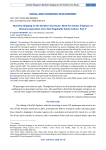
Статья научная
The opening of the Northern Sea route (NSR) due to the melting of the Arctic sea ice ushers in many opportunities. The International Maritime Organization has introduced several regulations for shipping and the training of seafarers. The Northern Sea Route has several challenges with respect to the infra-structure and the harsh weather conditions. The recent incident onboard the Viking Sky cruise liner was a reminder of such challenges. The Norwegian authorities responded admirably, and the Search and Rescue operation was conducted with the necessary coordinated effort in the shortest possible time. Other incidents along the NSR and increasing ship casualties in the Arctic region which have been analyzed with reference to the adequacy of existing regulations. The author’s opinion is that these incidents bring out a need to examine the adequacy of the Polar code, infrastructure along the NSR and the current state of Search and Rescue (SAR). From a practical point of view the Norwegian experience would be of interest to all Arctic states and the IMO. The evolution of the Polar Code and the challenges in implementation are discussed. The article puts forth several recommendations for improving cooperation and safety with the aim of making the NSR a viable alternative route. This article can be used for educational purposes at universities. It is relevant for civil servants, shipping authorities, search and rescue authorities and researchers involved in developing the Arctic sea routes and specifically the Northern Sea route.
Бесплатно

Статья научная
The opening of the Northern Sea route (NSR) due to the melting of the Arctic sea ice ushers in many opportunities. The International Maritime Organization has introduced several regulations for shipping and the training of seafarers. The Northern Sea Route has several challenges with respect to the infrastructure and the harsh weather conditions. The recent incident onboard the Viking Sky cruise liner was a reminder of such challenges. The Norwegian authorities responded admirably, and the Search and Rescue operation was conducted with the necessary coordinated effort in the shortest possible time. Other incidents along the NSR and increasing ship casualties in the Arctic region which have been analyzed with reference to the adequacy of existing regulations. The author’s opinion is that these incidents bring out a need to examine the adequacy of the Polar code, infrastructure along the NSR and the current state of Search and Rescue (SAR). From a practical point of view the Norwegian experience would be of interest to all Arctic states and the IMO. The evolution of the Polar Code and the challenges in implementation are discussed. The article puts forth several recommendations for improving cooperation and safety with the aim of making the NSR a viable alternative route. This article can be used for educational purposes at universities. It is relevant for civil servants, shipping authorities, search and rescue authorities and researchers involved in developing the Arctic sea routes and specifically the Northern Sea route.
Бесплатно
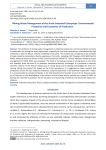
Статья научная
The problems of mining waste management at industrial enterprises and increasing the economy of production are among the most urgent ones, especially for the Arctic ecosystems, characterized by high sensitivity to external factors and the complexity of recovery. The research was conducted on the example of large industrial corporations directly operating in the Arctic, including PJSC PhosAgro, PJSC MMC Norilsk Nickel, Severstal Resource division of PJSC Severstal and PJSC NOVATEK. The key indicators related to waste management for 2018-2022 were analyzed. The trend of increasing volumes of mining waste in the Arctic was revealed, while the level of its utilization remained practically unchanged. It is proposed to intensify scientific research in the field of rational use of mining waste and to develop technologies for their processing, taking into account the impact on the Arctic ecosystems. It is suggested to create research and production centers for each industrial enterprise using the experience of the balanced “triple helix” model. It is recommended to actively participate in the Interdepartmental Scientific Council of the Russian Academy of Sciences on the development of the mineral resource base and its rational use, created in 2023, to develop the scientific foundations for the extraction and processing of minerals and accelerate import substitution.
Бесплатно
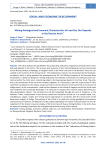
Mining-Geological and Economic Characteristics of Lead-Zinc Ore Deposits in the Russian Arctic
Статья научная
The article analyzes the possibilities for prospecting, evaluation, exploration and extraction of zinc and lead deposits in the Arctic. The reserves and resources of zinc and lead deposits and ore occurrences on the Novaya Zemlya archipelago, on Vaygach Island, in the Polar Urals and in the Northern Timan are calculated on the territory of the Russian Arctic. The predominant reserves are represented by the Pavlovskoye deposit, which is being prepared for development by JSC First Mining Company of the Rosatom State Corporation. In 2019, the design of a mining enterprise was initiated, no lead and zinc mining has been carried out within the Arctic zone. A promising object is the Saureyskoye deposit in the Polar Urals. The problem is the remoteness of the site from transport highways. It is necessary to plan the construction of a dirt road from the deposit to the railway. Cargo can then be sent to the ports of the Gulf of Ob or to the port of Indiga when it is put into operation. Lead and zinc deposits on the island of Vaygach and on the Arctic coast near Amderma were previously developed. It is necessary to reassess their reserves and to determine possible development options. The extracted ore will be transported through the port of Amderma. In the Northern Timan, reassessment of non-ferrous metal ores should be carried out in a complex (lead, zinc, molybdenum, copper, nickel). Ore mining may be appropriate in connection with the construction of the deep-water seaport of Indiga. The purpose of this article is to study the mining, geological and economic characteristics of lead-zinc ore deposits and the spatial organization of marine communications for the development of the mineral resource complex of the Arctic zone of Russia. Mining facilities in the Arctic have an important strategic importance for strengthening national security of the country.
Бесплатно
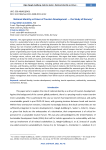
National identity as driver of tourism development - the study of Norway
Статья научная
The urgent global need to decrease the dependence on natural resource extraction and find solutions for a sustainable future is also reflected in policies prioritized by the Norwegian government. Among others, tourism has been defined as a promising alternative for future economic development. Tourism in Norway has not remained unaffected by the global growth in international tourist arrivals. This growth is often neither geographically nor temporally equally apportioned, which hampers tourism’s transformative power of generating year-round and well-distributed income. Further, tourists are no longer purely driven by hedonic and relaxation needs: they also want to challenge themselves and deeply immerse themselves in foreign nature, culture, and other types of experiences. We argue that better integration of national identity can draw the needs of tourists and hosting communities nearer to each other and, thus, become a driver of tourism development. Based on a comprehensive literature, this conceptual paper explores the core elements of the Norwegian identity, including political and cultural values, national characteristics, interests, and lifestyles, and their integration by the tourism industry. We find that only some of these elements have been used by the industry and have often been commodified for economic gain. We discuss a few examples of how national identity can be translated into unique selling points that could generate sustainable development. This, however, requires strong governance, and coordinated and integrative destination management that involves stakeholders from within tourism and beyond, particularly local communities.
Бесплатно
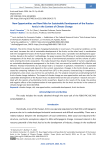
Статья научная
The Arctic climate has been changing dramatically in recent years. This external condition, on the one hand, increases the risk of sustainable development of the Arctic; on the other hand, in combination with the management factors of the Russian Federation’s Arctic zone, it provides new development opportunities. Based on the authors’ methodology, the paper assesses the efficiency of sustainable development management of the Arctic by comparing the costs of environmental protection and the volume of pollutants entering the Arctic ecosystems. The study has shown that, despite the growth of current expenditures on sustainable development management in the Arctic, their use cannot be considered fully effective and efficient: financial investments do not always lead to the reduction in pollution; investments in sustainable development are uneven and depend on the current conjuncture. Changes in the Arctic climate have been assessed by comparing indicators for the period from 1971 to the present, characterizing air temperature, precipitation, snow cover, sea and river ice, permafrost, etc. The analysis has revealed an accelerated growth of Arctic climate change indicators. The impact of climate change on new opportunities and new risks for the sustainable development of the Russian Arctic has been determined on the basis of authors’ research and correlated with the opinion of authoritative Arctic researchers. Based on the results of the study, the positive and negative effects of the implementation of new opportunities for the Arctic territories in the context of climate change have been identified.
Бесплатно
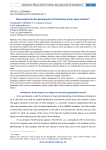
New projects for the development of Russian Arctic: space matters!
Статья научная
The article summarizes the results of the analysis of 23 recent projects for the development of Russian Arctic resources in terms of the spatial effects they generate or rely on. It is proved to be the feature of the economic and geographical approach to the analysis of arctic projects. The most critical change, compared with the realities of the late Soviet era, is the reliance on the sea logistics of most new projects for the development of Russian Arctic resources. Three main spatial effects of development projects are described in detail: the localization effect, the regional effect, and the corporate effect. The first one reflects the desire of companies to the utmost compactness and low occupancy of the production site, platform solutions using artificial intelligence, remote control, robotic mining, and processing schemes. The second effect revives the Soviet district effect within the contour of the resource corporation as their desire to provide cost savings on the “soft” infrastructure pairing of neighboring production facilities. The third effect characterizes the cooperation of usually competing companies in severe natural and economic conditions for the development of arctic projects. It is untypical but may occur in some cases. The territorial structures of the new development space are also affected by the desire of companies to absolute control of the resource chain, to rely on previously created development bases, technological, organizational, and institutional innovations, which usually have a spatial “dimension”. An “ideal” corporate scheme for the modern development of arctic resources - a separate autonomous production platform where production and processing are deployed, with uninhabited technologies and remote control of production, contradicts state interests and creates sharp spatial and social contrasts.
Бесплатно
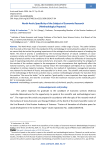
North-Arctic Specificity of the Subject of Economic Research (Methodological Aspects)
Статья научная
The North-Arctic topic of economic research covers a wide range of issues. The author believes that if we look at this topic from the standpoint of the methodology of constructing the subject of research, we cannot help but notice the growing importance of the axiological and evaluative aspects of studying the North. This kind of priority is conditioned by the increasing influence of natural conditions on socio-economic activity and the need for scientific explanation of transitions from natural to social. The methodology of practical activity in the conditions of the North traditionally reflects the difficulties of choosing the ways of organizing production and social activity here. At present, this is supplemented by the ambiguity of the reaction of the northern regions to the emergence of new circumstances that significantly affect the national economy, such as the need to urgently ensure the technological sovereignty of our country and strengthen its military-industrial complex. Therefore, the method of mobilization management becomes very relevant for the North of Russia, and especially for its Arctic zone. The scientific and practical aspects of the methodology of North-Arctic activities have a common methodological attitude: the transition from the position “the more the better” to the position “good quality is more important than large quantity”. Moreover, in the Arctic, the need for a transition “from the maximum necessary to the realistically possible” is increasingly realized.
Бесплатно
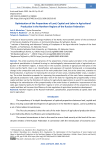
Статья научная
The article examines the dynamics of the proportions of land, capital and labor in the context of agricultural specialization in livestock farming in a technologically interconnected cycle of agricultural production in the Northern regions. It shows that in the economic activities of agricultural enterprises in the Arctic and the North, there is an intensification and expansion of livestock farming and a corresponding change in the composition and structure of the main production funds, but at the same time, attention to field production, in particular to improving the structure of sown areas, including fodder crops, is weakening. The article formulates proposals for improving the proportionality of the main factor components of agricultural production: land, capital and labor. One of the tools for regulating the proportionality of land, capital and labor can be the formation of motives for agricultural organizations to search for specializations leading to the rationalization of the proportionality of the main factors of production. Improvement of the state agro-industrial policy for the Northern regions in terms of rationalization of the proportions of land, capital and labor will increase the efficiency of state regulation of agricultural production development.
Бесплатно
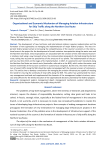
Статья научная
The development of new territories and international relations requires modernization and the formation of new approaches to managing the implementation of major federal projects. The most important federal project aimed at increasing the competitiveness of the country’s economy in the international arena is the project for the development of transit container transportation along the water area and the Northern Sea Route. Great expectations are associated with the creation of new international economic relations, built using a new transport artery, the communication along which is formed along the shortest route, taking into account the peculiarities of the structure of our planet. The implementation of the project has clear time limits on the stages of its implementation. In 2027, it is planned to start movement along the Northern Sea Route sea transit route (hereinafter referred to as the NSR), which unites the eastern and western extremities of the Eurasian continent in autonomous navigation. By this time, the entire infrastructure of vessel traffic along the NSR should be ready and equipped with the necessary means of communication. This article aims to develop a mechanism for managing the aviation infrastructure capable of meeting the needs for ensuring the continuity of ship traffic along the NSR. The author has systematized the necessary management methods and supplemented the elements of the management subject structure, necessary and sufficient for the timely execution of the organizational decisions planned by the federal program.
Бесплатно
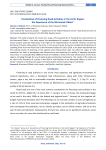
Статья научная
The article presents the results of a study of the peculiarities of financing the road economy of the Murmansk Oblast — the Arctic region, the development of transport, including road, infrastructure of which acquires particular importance in the light of the implementation of national interests and priority directions of Russian state policy in the Arctic. In the course of work, the author considered the dynamics of spending funds from the Road Fund of the Murmansk Oblast for 2012–2020. It has been determined that the existing volume of financing of the regional road infrastructure does not allow the region to fully implement the tasks of developing road infrastructure and improving the quality of highways (primarily local ones). It is concluded that additional funds are needed to finance the road infrastructure of the Arctic regions, including through the use of public-private partnership mechanisms. The results of the study can be used in the formation of a policy in the field of road facilities in the Murmansk Oblast, as well as in further research on the financial support of road activities and the functioning of road funds.
Бесплатно
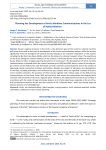
Planning the Development of Arctic Maritime Communications in the Era of Hybrid Warfare
Статья научная
Russia’s regional presence in the Arctic is the dominant goal of the country’s national maritime policy and is ensured by the level of development of the Arctic communications system, while the primary significance from the standpoint of national security belongs to the maritime component of this system, including the Northern Sea Route (NSR), which has the status of a national transport artery. The importance of the Arctic among the national interests of the country is confirmed by the current Maritime Doctrine of Russia 2022 and other strategic planning documents of recent years. The development of Arctic maritime communications is planned within the current horizons up to 2030 and 2036, both in terms of ensuring cargo turnover of the NSR (as the axial framework of Arctic maritime communications) and in the context of approving capital construction activities and facilities. Besides, the subject of planning is the development of the fleet, including icebreakers and reinforced ice-class vessels, which are rightfully a symbol of Russia’s Arctic maritime potential. The presence of these vessels together with military ships on the NSR and sea communications of the Arctic Ocean (AO) and the Arctic seas ensure the connectivity and integrity (both maritime and territorial) of the Arctic regional space. Therefore, the replenishment of the Arctic ice fleet in accordance with the needs of large oil and gas projects is of critical importance, especially in the era of hybrid confrontation between Russia and the countries of the “collective West”, which has already acquired obvious features of a full-fledged war.
Бесплатно
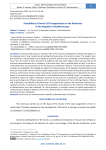
Possibilities of Arctic Oil Transportation to the Refineries of the Republic of Bashkortostan
Статья научная
Communications play an important role in the economic development of states and regions, in the development of new markets by connecting distributed areas of economic activity. The modern sanction economy is characterised by the change of economic partners and, accordingly, communication directions. Thus, the vector of Arctic oil exports is shifting to the Asia-Pacific region, which increases the role of maritime communications for its transport. At the same time, from a practical point of view, it can be assumed that Arctic oil can become one of the resources of domestic refineries. The aim of the study was to consider the possibilities of providing the oldest oil refining complex of the Republic of Bashkortostan with Arctic oil and to build a basic scheme of spatial organisation of communications linking the economic space of Russia. Achievement of the set goal required the solution of the following tasks: to determine the role of Russia in the world oil exports on the basis of “bp Statistical Review of World Energy”; to conduct a comprehensive analysis of studies of domestic scientists on the issues of oil production, sales and refining, as well as promising Arctic offshore projects; and to consider the features of the oil refining industry of Russia and, in particular, the Republic of Bashkortostan. As a result of the research, the conclusions about the prospectivity of Arctic oil production and about the possibilities of its delivery to the refineries of the Republic of Bashkortostan have been obtained; for these purposes, a principal scheme of spatial organisation of communications linking oil deliveries from Arctic offshore fields to refineries in Ufa of the Republic of Bashkortostan has been developed.
Бесплатно
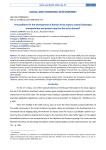
Статья научная
The authors consider the concept and description of the Northern Sea Route (NSR), the main preconditions for the development of the export in the Russian Arctic when using the NSR. The concept and analysis of coastal transport using Arctic vessels and the forecast conclusions on possible Arctic projects are discussed. System for the development of the Russian Arctic export, coastal transport, and project cargo include rail and sea freight transport systems. The purpose of the article is to analyze the data on transport systems, as well as to determine the critical prospects for their development in Russia, considering a new concept - the Northern Sea Transport Corridor. It is the national transport communication of the Russian Federation. Therefore, the development of the Arctic cargo flow in the Northern Sea Route is mainly connected with the projects for the development of mineral resources in the Arctic zone of the Russian Federation. For the transshipment of hydrocarbon raw materials and ores from the Northern Sea Route area, the ports of the Barents Sea are used. In the future, a significant role will be played by LNG transshipment in the ports of Petropavlovsk-Kamchatsky, Murmansk (Marine LNG transshipment complex). Also, it is planned to use the port of Indiga for the transshipment of coal from Western Taimyr. The NSR shipment ports and transshipment ports form a single transport chain and require coordinated management.
Бесплатно
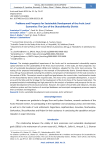
Статья научная
The strategic geopolitical importance of the Arctic and its environmental vulnerability require special attention to the sustainability of the Arctic local economies. In this study, we have proposed a system of sustainable development goals (SDGs) and indicators, adapted for the Arctic local economy. The testing of the proposed methodology on the example of Shuryshkarskiy district (Yamalo-Nenets Autonomous Okrug, Russia) allowed analyzing the problems and prospects of development of the local economy in the context of SDGs. The analysis reveals a significant gap between the current state, transformation trends of the Shuryshkarskiy district and the required state, the vector of its sustainable development, in accordance with the SDGs and the Strategy for the Development of the Arctic Zone of the Russian Federation. The proposed analytical methodology has high potential for the analysis of problems and prospects for the sustainable development of Arctic local economies. However, the system of local SDGs and indicators, the data collection system and the structure of municipal databases and municipal management processes require their correlation and integration.
Бесплатно
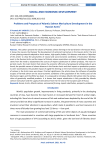
Problems and prospects of Atlantic salmon mariculture development in the Russian Arctic
Статья научная
The authors present the volume of Atlantic salmon farming in the world and in the Russian Arctic. It shows the reasons that hamper the development of salmonid mariculture in the Russian Arctic: the lack of own planting material adapted to Arctic waters, high-quality fodder, fish diseases and others. Objectives of the article: to show the peculiarities of natural and socio-economic conditions of mariculture development in the Russian Arctic and the impact of Atlantic salmon mariculture on import substitution. Relevance stems from the need to substantiate the sources of import substitution of salmon products. The most important results: the main factors that reduce the economic efficiency of growing and selling products were found; the possible causes of salmon diseases in the Russian Arctic and their impact on production processes were systematized, the possible impact of caged fish farming on the environment and on the population of salmon in the Arctic zone was shown. Practical significance: the article shows the influence of possible escapes of farmed salmon on the socio-economic conditions of the population of the Terskiy coast of the Murmansk region and the White Sea basin. It is proposed to introduce Atlantic GM salmon into the composition of genetically modified products. It is shown that import substitution is fully provided by Atlantic salmon mariculture and the supply of wild salmon from the Far East to the European part of Russia.
Бесплатно

Problems of Improving the Socio-Economic Efficiency of Fishing Activities in the Arctic
Статья научная
The data on the growth of prices for Arctic fish species in 2015, 2018, compared to 2013, the period of the relatively “hard” ruble, are presented. The reasons for the price increase are shown. An important one is the replacement of the “historical” method of providing biological resources to fishermen with the “auction” one, since it is associated with payment for the right to harvest. This leads to an increase in production costs and prices for fish products, as well as to a decrease in fish consumption by the population. Objectives of the article: to develop proposals to increase the supply of products from Arctic fish to Russian markets (primarily to the markets of the North-West of the country) and to reduce their prices. The relevance of the article is due to the lack of practical measures to reduce the prices of Arctic fish products and increase consumption. The most important results: the author's proposals to stimulate increased sales of fish products in Russia provided by the fish products of the Northern basin are substantiated. Practical significance: it is shown that the use of the developed proposals will reduce consumer prices for fish products, an increase in visits of fishing vessels to Arctic ports and unloading of fish products will lead to a multiplier effect by improving the activities of fish processing enterprises and servicing the fishing fleet.
Бесплатно

